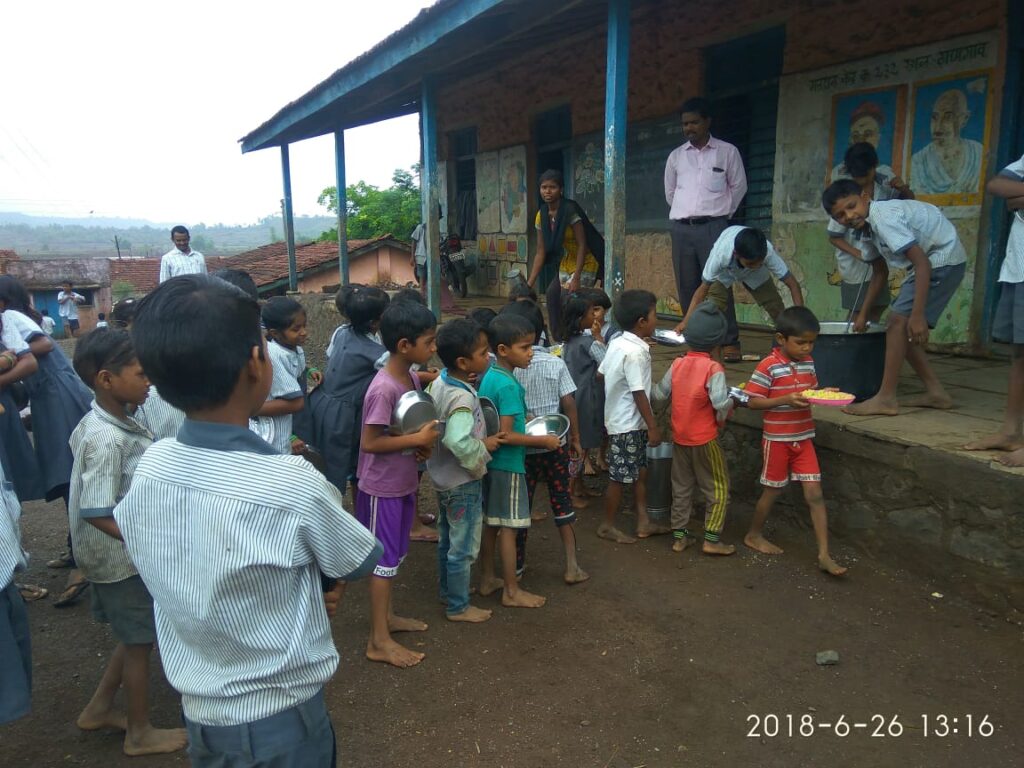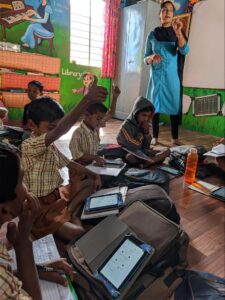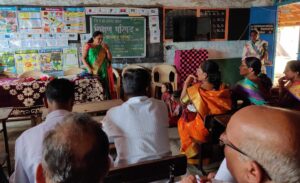All over the world, governments invest in teachers’ professional development as a measure to improve student learning outcomes in a region. Elaborate studies have attempted to evaluate the impact of such interventions; in 2019, Campbell Collaboration collated over 50 such studies to assess the effectiveness of continuing professional development through teacher training.
Surprisingly, it could not find any conclusive evidence that students’ learning outcomes improved after a teacher training intervention.
In India, it seems as if the Ministry of Human Resource and Development has taken note of this; the 2020-21 Union Budget has allocated ₹15 Crore less to teacher training as compared to last year. With almost 40% of Class 1 students in rural districts unable to even recognize letters (ASER 2019) and a nation-wide shortage of qualified teachers, education departments are facing a big question: is it even necessary to regularly train our teachers?
Direct Proximity and Maximum Interaction
Investing in the professional development of teachers seems intuitive, simply because of the amount of direct interaction they have with students in classrooms. Guardians aside, one could go so far to say that teachers are the most influential stakeholders in a student’s life, spending roughly five hours teaching formally and another two hours informally engaging students during assemblies and breaks. This amounts to almost one-third — and arguably the most significant part — of a students’ day. For those attending Zilla Parishad (ZP) schools at the district level, teacher interaction goes beyond knowledge absorption. For a student, it also means having a role model who can instil value systems, offer emotional and mental support, and help shape their futures in a competitive world.
You May Also Like: What Ed-Tech Looks Like in Rural Maharashtra
The weight of this direct interaction makes teachers the most important resource in a classroom. Yet, the ways in which we invest in them needs some rethinking.
Diverse Classrooms Require Contextual Training
Mr Ramesh Hule* teaches in a ZP school in Surgana, a tribal taluka on the Gujarat-Maharashtra border and within the Nashik district. His school doesn’t have electricity, sound infrastructure, and a sufficient amount of staff to teach all grades separately. Every day, he travels for an hour on foot to reach his school.

As soon as he opens the gates, a flurry of children comes in. Among them is Yash*, a 12-year-old who speaks Airani (a dialect of Marathi). His parents are daily-wage farm labourers. When fields around Surgana do not yield crops, they are forced to leave behind Yash and migrate across to Gujarat. Mr Hule engages 40 such students from two different grades. They speak different dialects of Marathi and have unique learning needs.
Next, we have Mrs Priti Bagul, another teacher in a ZP school in Vilholi, a rural taluka on the outskirts of Nashik city. The school has 15 classrooms across Marathi and semi-English mediums.

Mrs Bagul teaches a Grade 3 classroom of 25 students whose parents are farm owners or employed in nearby factories. Her school received a computer with digital content for Mathematics and 40 tablets, which her students use while she teaches.
Mr Hule and Mrs Bagul are both teachers in the same ecosystem of Zilla Parishad schools, within the same district of Nashik. Yet, for all practical purposes, they engage with two different worlds.
Both recently attended the National Initiative for School Heads and Teachers Holistic Advancement (NISHTHA) training in their individual talukas. They were taught the exact same modules — the same teacher practices, theories and socio-emotional skills — by their trainers.
Do you really think their upskilling was relevant and useful to them and their students?
Flexible, Decentralized Training Programs Needed
From the remotest regions of Surgana to central parts of Nashik city, Zilla Parishad schools serve 3,20,000 children on the backs of 12,000 teachers who come from varying backgrounds themselves. These 3,20,000 students represent 3,20,000 learning needs. Yet, this is the story of only one district; most state-level teacher-training interventions follow the model described here. India consists of 720 such districts spread across 36 states and UTs, where more than 43 lakh teachers teach.
Even if we had enough teachers, a one-size-fits-all teacher training model cannot solve the crisis of quality education within one district, let alone across the country.
The context within which teachers operate can be accommodated by decentralising the design phase of training modules. This is not to say that there should not be any centrally binding directive or uniformity. A framework like the National Curriculum Framework for teachers can be used to give direction, but the programs in themselves should be designed with respect to the target audience’s contexts.
You May Also Like: The Telangana SCERT Curriculum Framework: Rigorous or Unrealistic?
For example, SCERTs can define the framework for training programs which would include clearly defined goals of target competencies, with well-defined levels of mastery for each one. This should be accompanied by guidelines for fine-tuning the execution successfully.

These programs’ modules should have a variety of ways for teachers to achieve target competencies as defined in the framework itself. Different templates for teacher training can be designed by the Regional Academic Authorities (RAAs), which can then incorporated by the District Institute of Education and Training (DIETs) in their teacher training programs. Even at this stage, DIET officers must engage with teachers and Cluster Resource Group Members (CRGs). A detailed understanding of respective blocks will ensure the seamless implementation of sessions at the the block level.
While this may seem complicated at the outset, it is actually just a simple division of responsibilities for teacher training interventions, based on the administration’s proximity to understanding the target audience. If we are to improve the learning outcomes of our students while creating responsible citizens out of them, a highly individualised program for teachers in terms of their upskilling and follow-up support is the need of the hour. Infantilizing this invisible-yet-critical step in the learning process is like chopping through the woods with a blunt axe.
Featured image: Students learning mathematics using tablets in ZP School in Vilholi, nashik District | Picture courtesy of LFE.







[…] You May Also Like: Why Your Teacher Needs To Be Trained Better […]
[…] example, in some states about 60-70% of classrooms are multigrade—that is, one teacher teaches children of different grades in a single class. The problem does not […]
With the gradual coverage of government schools by edutech interventions (hardware and digital content), there is a need that the teachers’ training incorporates the skills needed to use and teach through such Edtech systems